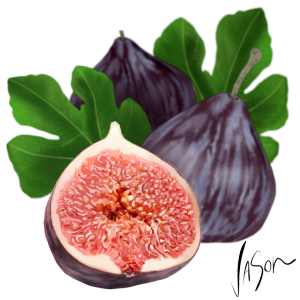by Jason Ford
Ford on Food
Figs have a long and colourful history. The Greeks considered the fruit a symbol of fertility, and it’s said fig trees grew in the Hanging Gardens of Babylon.
In the book of Genesis, Adam and Eve began wearing aprons of fig leaves after eating forbidden fruit from the Tree Of Knowledge (naughty kids!).
While I remain unsure about wearing foliage underpants, I’ll eat figs any day.
Figs are a flower turned inside out and the seeds are actually the fruit.
They’re generally golfball sized and pear shaped, with tender skin that varies in colour from green to dark red, purple or black. The sweet pulpy flesh can be pink or even yellow.
They are one of the only fruits in the world that can begin to ripen and sun dry on the tree, and dried figs are almost twice as sweet as fresh ones.
When buying figs, look for plump and unblemished fruit with a sweet perfume.
Don’t worry if they have started to split and reveal the inner flesh, as this is a sign of ripeness.
They are highly perishable after picking and should be stored in the refrigerator wrapped in wax paper, and are best eaten within a few days.
They are wonderful in baked cakes, puddings and biscuits.
* * *
Sally’s Favourite Figs
 I once had coffee with a food and travel writer from Sydney, who told me a great and simple recipe for a fig appetiser.
I once had coffee with a food and travel writer from Sydney, who told me a great and simple recipe for a fig appetiser.
Method:
- Cut a deep cross into the top of a fresh fig
- Push some fresh goats curd cheese into the centre
- Hold the fig together with a strip of prosciutto ham wrapped around and secured with a toothpick
- Place on a baking tray, drizzle with a little honey and either bake or grill them until the prosciutto starts to sizzle






















